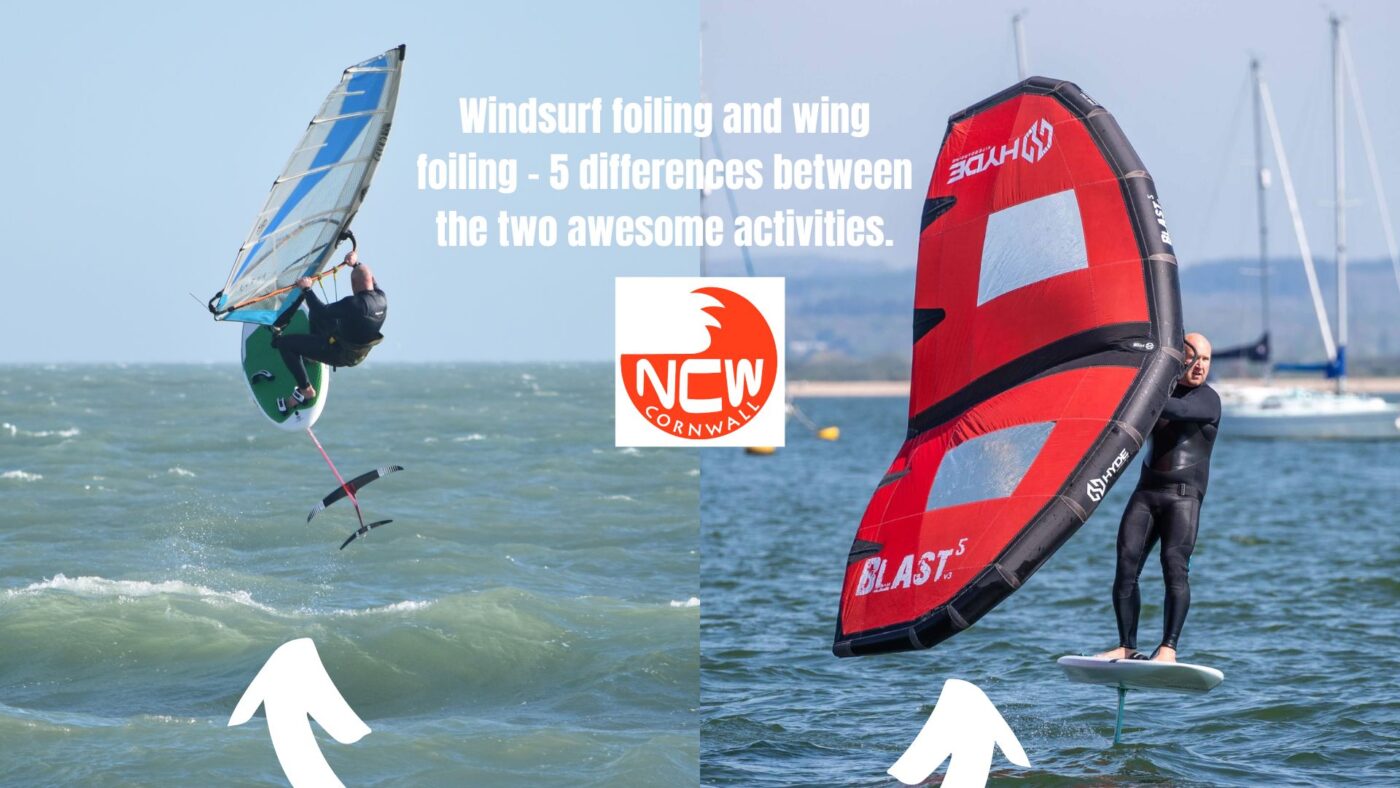Blog
Windsurf foiling and wing foiling – 5 differences between the two awesome activities.
Windsurf foiling and wing foiling may – on the face – have a lot in common. Many riders who started their foiling journey with windsurfing have now taken up winging. Some we know practise both. Whereas, others focus on just one. An article we published in 2021 talked about the two sports. But with things having moved on we thought we’d revisit the topic and highlight 7 differences between the two. If you’re considering your own ‘sail’ driven foiling journey this may point you in the right direction.
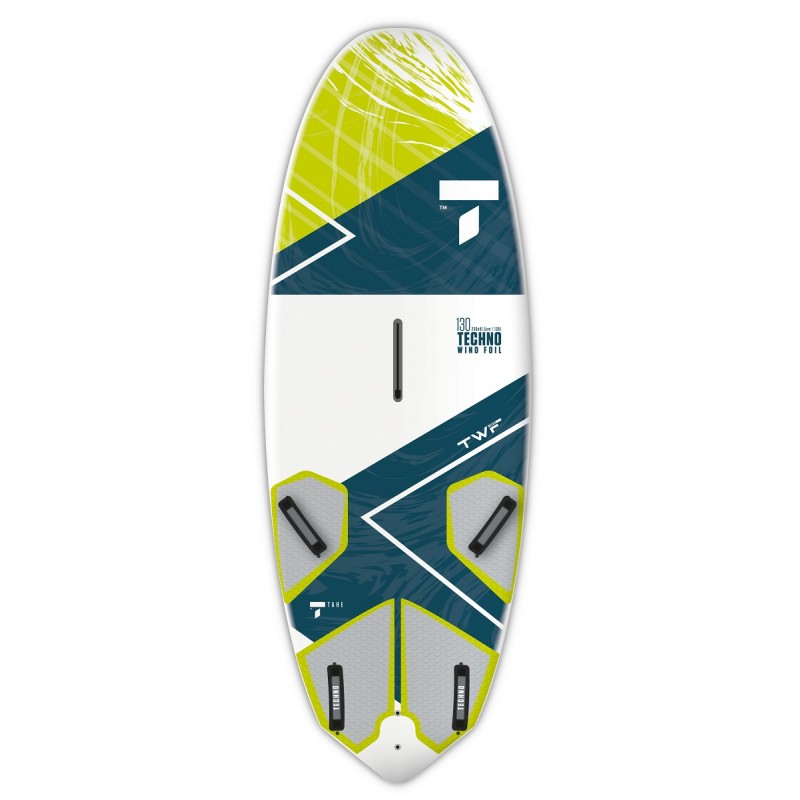
Tahe Techno Wind Foil 130L windfoil board
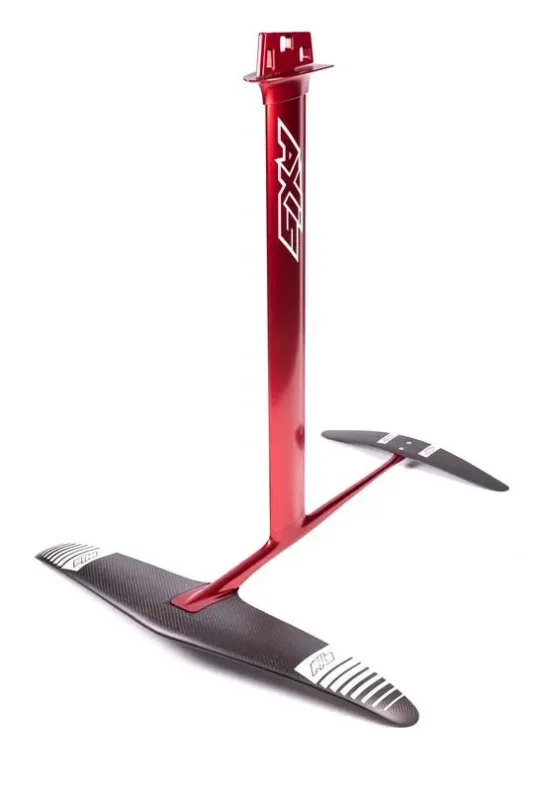
Axis Foils HA 900mm complete windsurf foil (windfoil).
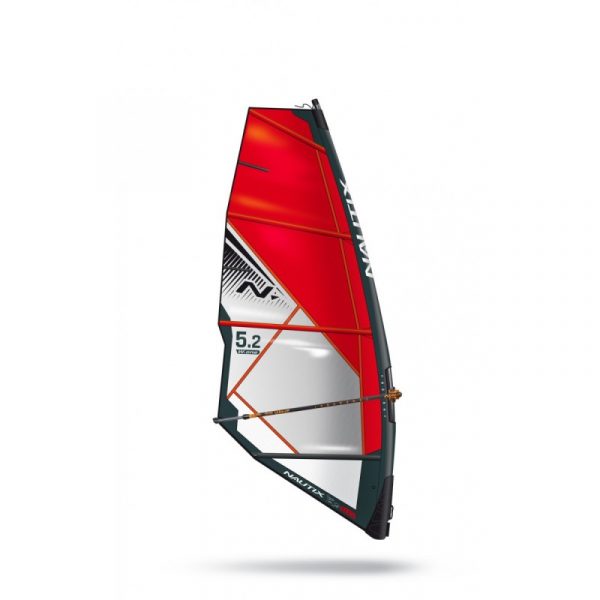
Nautix Windsurfing windsurf sails: 3.5m, 4.5m, 5.2m, 6.0m, 6.7m.
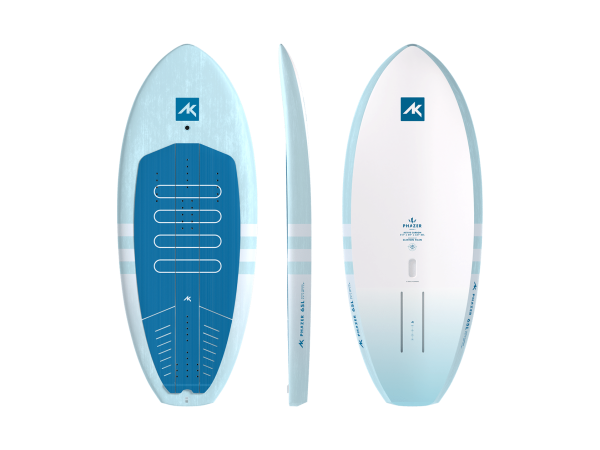
AK Phazer V4 foil board.
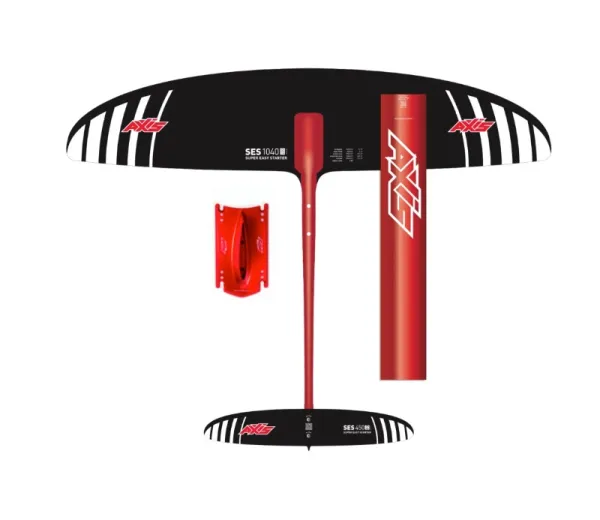
Axis Foils Super Easy Start (SES) 940 / 1040 complete foil
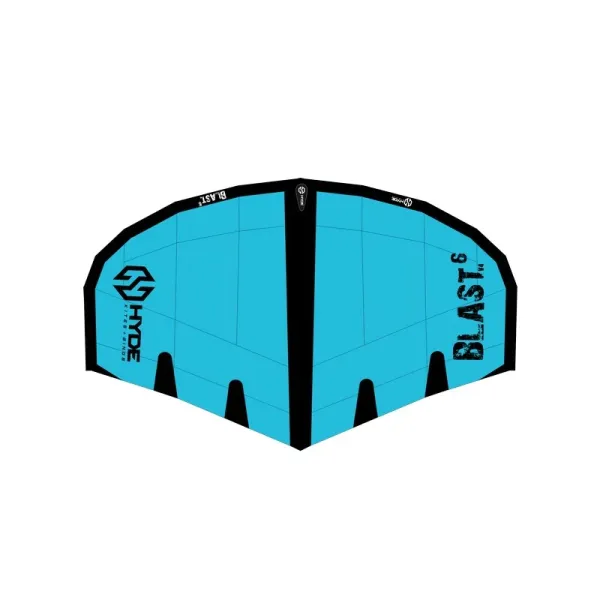
Hyde Blast foil wing 2024 3m / 4m / 5m / 6m
Where we’re at with windsurf foiling and wing foiling in 2024.
Windsurf foiling and wing foiling are both eye catching. As it stands wing foiling is the biggest talking point within the realm of ‘sail’ driven foil sports. Winging appeals to so many different demographics because of its perceived ease of use. A compact board, inflatable wing and foil. All you need for breezy fun on the water.
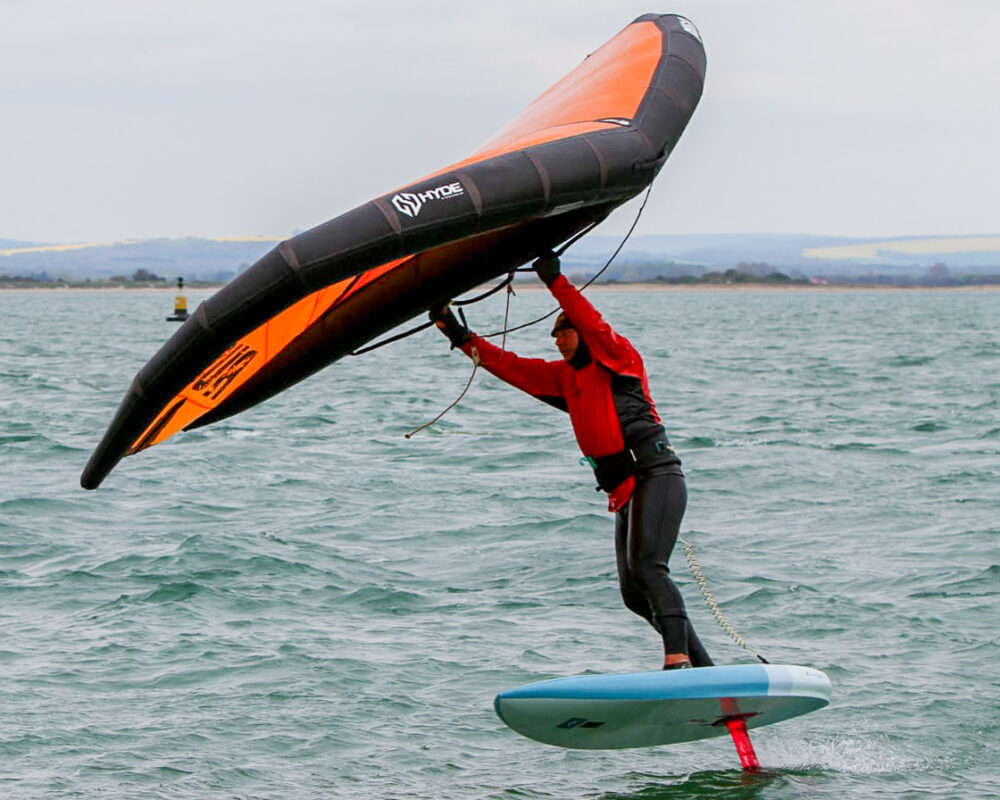
Windsurf foiling, meanwhile, is often seen as the domain of windsurfers. You need to be able to windsurf to foil. Mostly. Although there are arguments against that. Beginner windsurf foilers can sometimes take to the discipline easier than on fin.
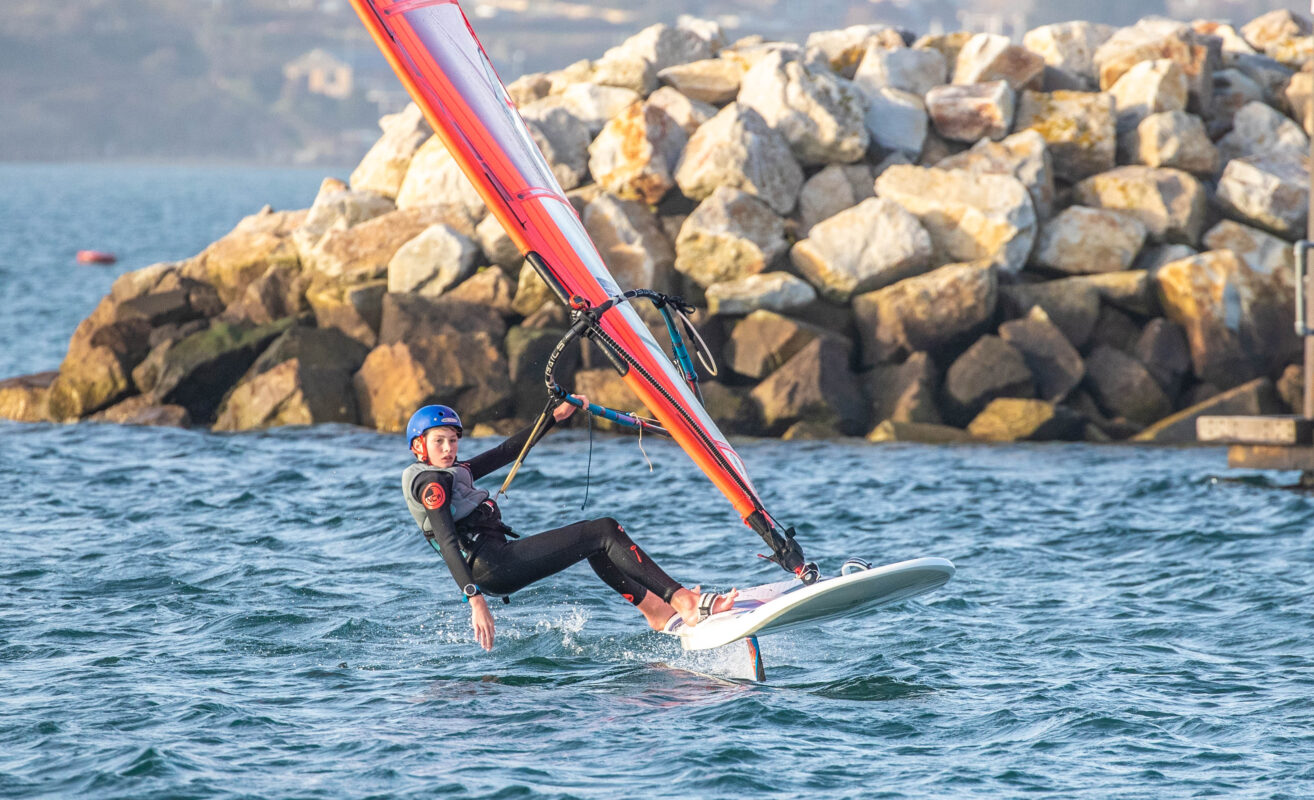
1. Freedom of flight.
Both windfoiling and windsurfing offer the ability to make use of marginal conditions. Of course, for those who wise, the upper realms of wind strengths are available. But more often than not riders take up foiling to maximise those lighter airs.
Once in flight, the foil is hyper-manoeuvrable. This gives a nimble ability and way to accomplish moves more efficiently. Even basic turns, such as gives and tacks, become more dynamic with a foil underneath. And then there are things such as wave riding – and we’re talking smaller bumps rather than large – which are opened up. Contrary to myth you can wave ride with both wing and windsurf foiling setups.
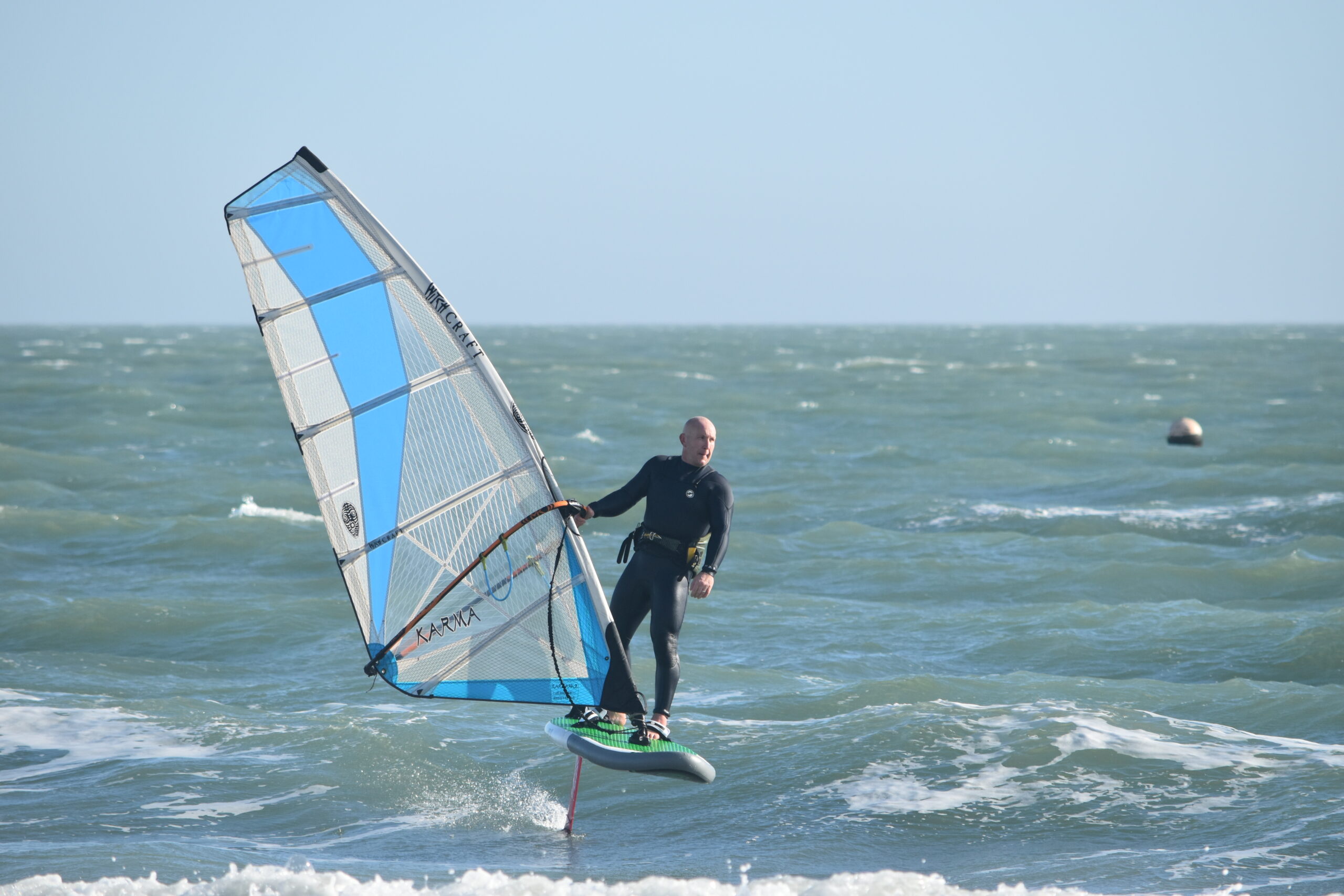
2. Windsurf foiling and wing foiling equipment.
Gear has come on leaps and bounds with wing foiling. Especially wings themselves. Back when wingsurfing exploded foil wings were floppy, saggy and not so efficient. These days better materials, manufacturing techniques and understanding have led to refined products that work so much better. Foils have improved with emphasis placed on efficiency. Wing boards too have developed with also more emphasis given to easy of release and getting airborne.
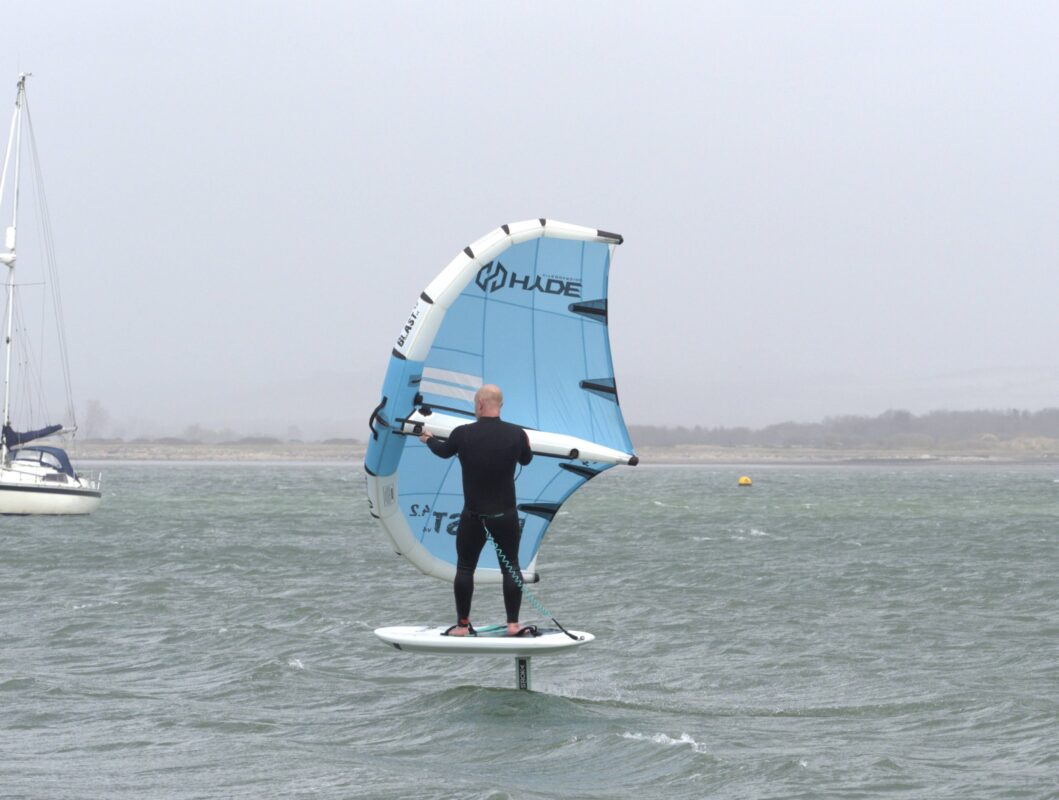
Windfoiling gear by and large remains unchanged. For recreational freeriding sailors use their usual sails. Windfoil boards are often a tad bigger and more voluminous than wing boards to carry the rig’s weight. Foils have developed in line with other foil sports so are generally better all round.
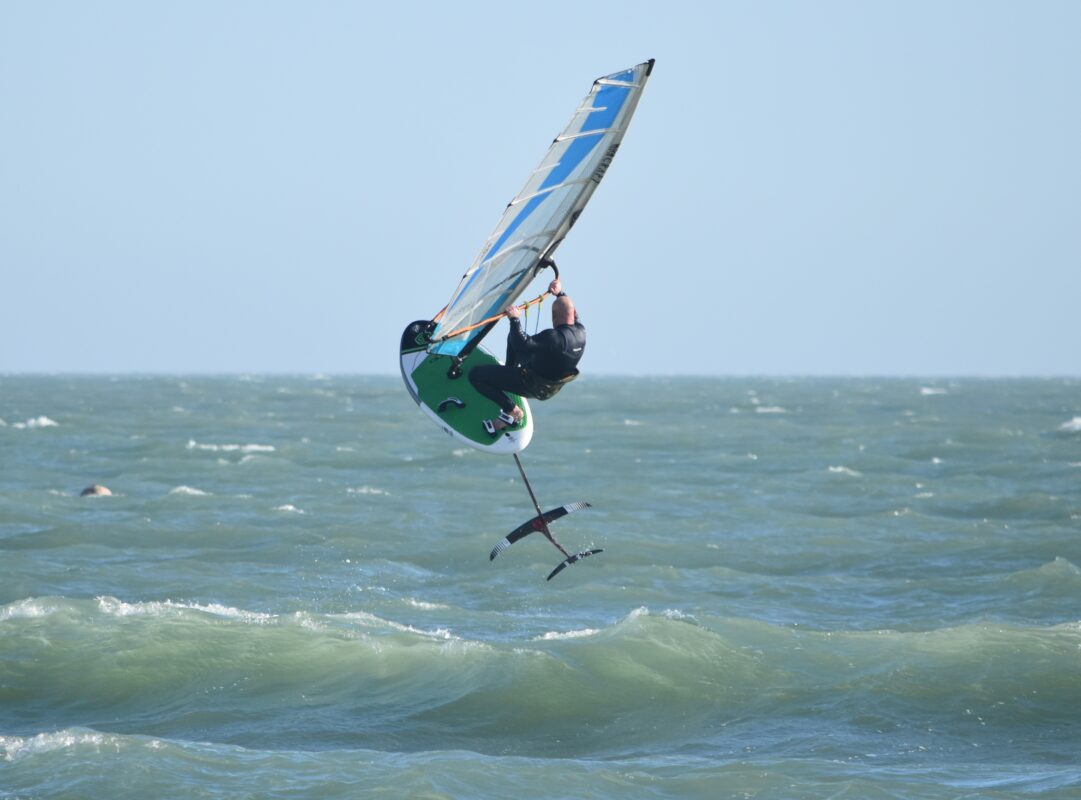
3. Recreational foil freeride.
This is where windsurf foiling and wing foiling differs quite a lot in 2024. Windfoiling back a few years was more about freeriding and recreational sailing. With the emergence of foil winging, there was a shift and riders sought to learn how to wing.
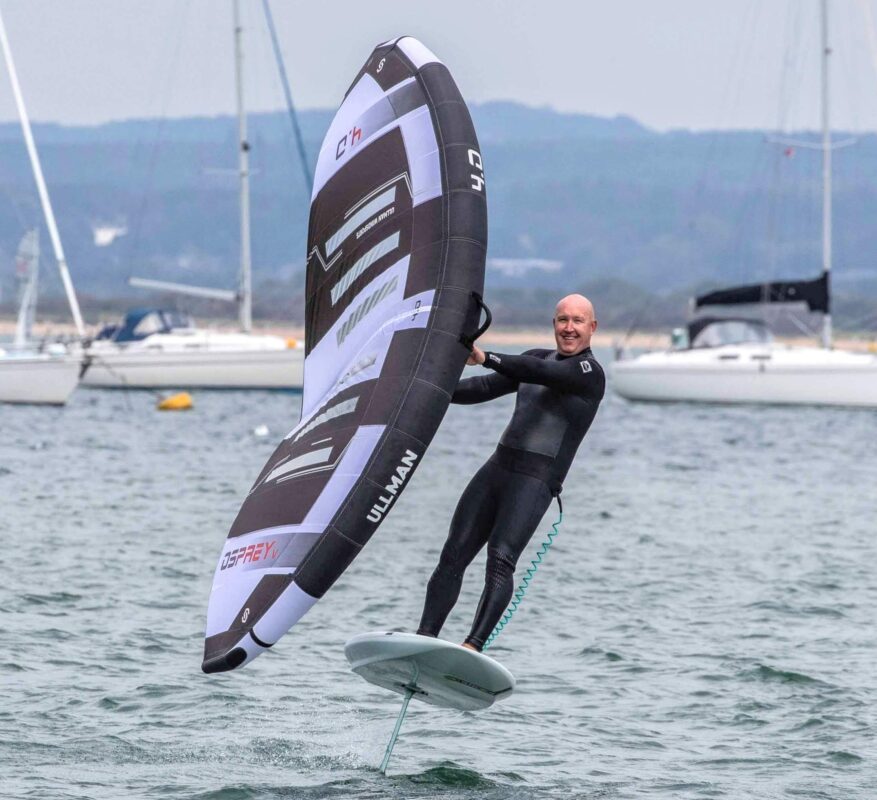
Whilst there are a hardcore few who practise windfoil freeride and foilstyle (see below) most windsurf foiling is racing-orientated. The IQ Olympic foiling discipline is what most people think of. Winging is now freeride-focused. Although, wing foil racing is slowly getting more popular. The masses, however, tend to remain focused on recreation (for now).
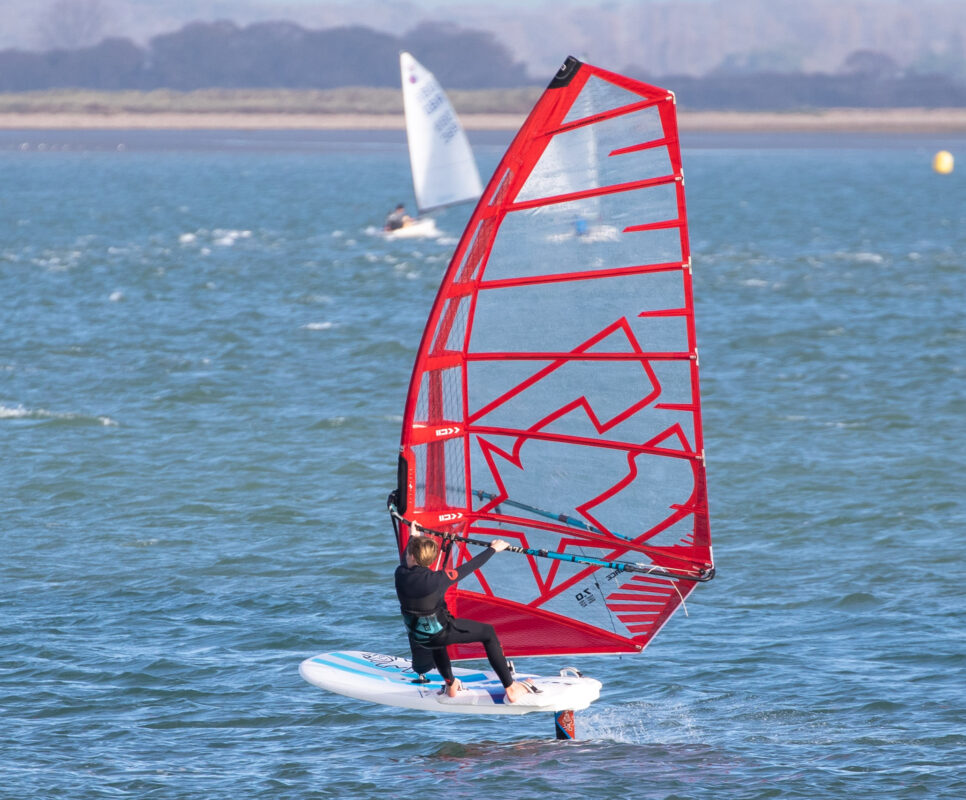
4. Jumping and foiling freestyle.
A foil gives an additional ‘spring’ to jump from. For riders who fancy sky rocketing their kit – even from flat water – you’ll see some decent altitudes being hit. Wing foiling jumps are arguably easy to achieve hang time. Being able to position the wing overhead means it acts a bit like a hang glider. But windfoiling jumps can be high! If jumping isn’t your thing you can also indulge in spinny, whirly wing tricks that call on wing handling skills instead (as per the two vids below).
Windfoiling freestyle is an extension of windsurfing freestyle. Often called foilstyle the same moves you see freestyle windsurfers do are performed on foil. Wing freestyle meanwhile can be split into flat water and wave. The former is spinny and done at slightly lower altitudes. Freestyle moves in waves, however, are much higher and often feature inverted contortions.
5. Foiling in waves.
Foiling in waves is where windfoiling and windsurfing are often misrepresented. It’s suggested that if you want to wave ride then winging is teh only way to go. Which isn’t correct. Granted, a wing is easier to flag out behind whilst riders glide on swell. But you can do the same – with pratcise – when windsurf foiling.
One thing we should make clear is that for any type of wave foiling is you don’t need massive waves. That’s one of teh beauties with riding a foil. Small swell, or even just wind blow bumps, can deliver plenty of surf foiling fun.
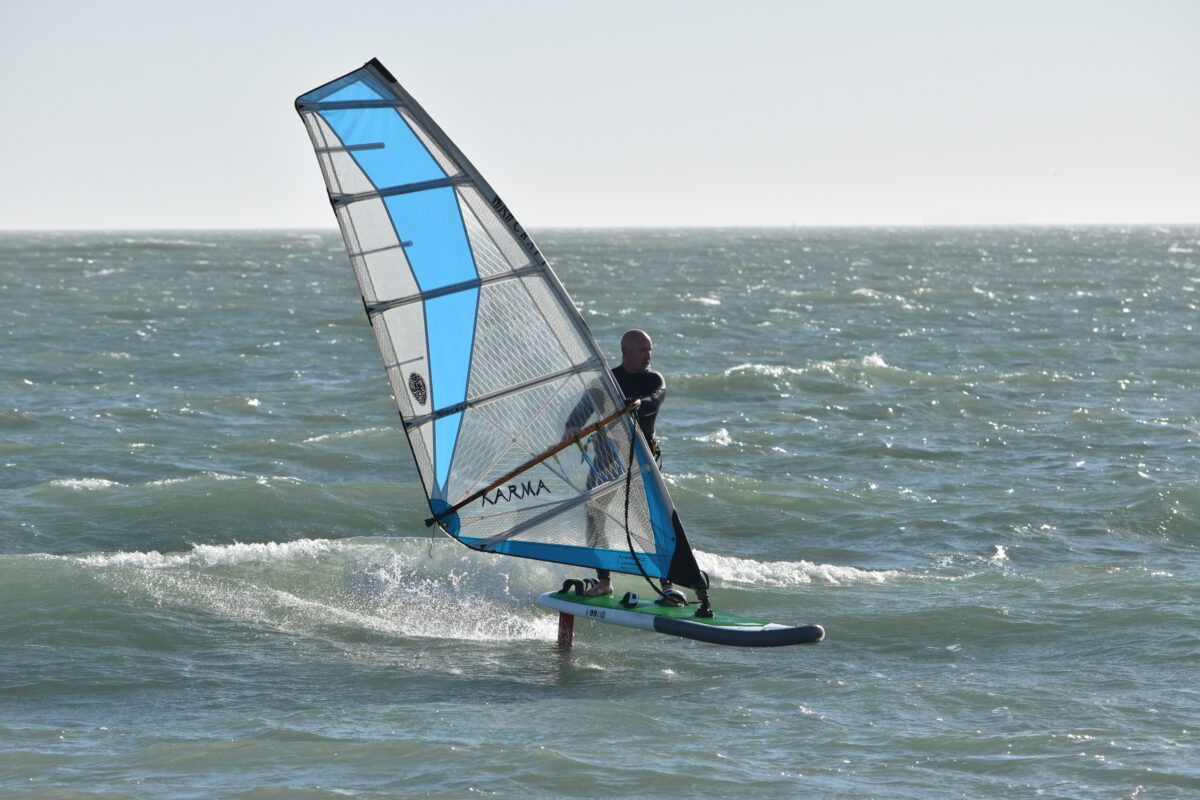
Summing up windsurf foiling and wing foiling.
Windsurf foiling and wing foiling are certainly different disciplines. Yet there’s plenty of synergy nonetheless. If you’re able to do both then why not. That said, we appreciate the cost and logistics of owning two sets of equipment.
For great options on windsurf kit – that work for fin and foil – check out the NCW online shop here. And for more foiling goodness head over to our sister website Foilshop UK here.
Thanks to Oli Lane-Peirce, Mike Pringuer, Angus McIntyre and Murray Maunder for pics.

